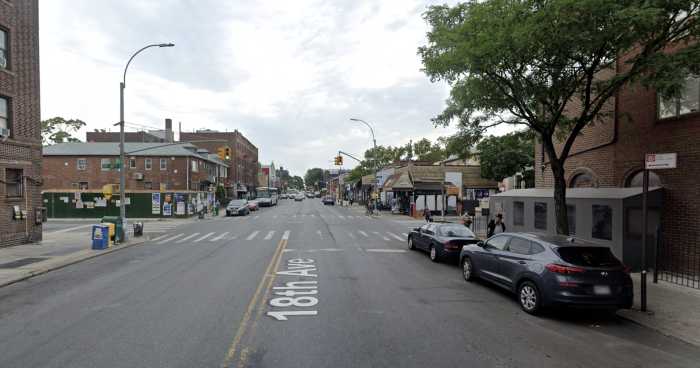His masterwork, “The Leopard,” revives the artistry of a great gay filmmaker
Luchino Visconti (1906-76) was not only one of the world’s great film directors, he was the ultimate human conundrum. An aristocrat—a Milanese count descended from Charlemagne—he was also a committed, life-long Communist, of whom his detractors would scoff, “He votes left but lives right.”
And live richly Visconti did, indeed, in a variety of splendid palazzos, all decorated with the exquisite taste that he exhibited his entire life, as one of the most elegant gay men of his epoch. He lived openly as a homosexual throughout most of his life; his wealth and position enabled him to do so, even while his enemies snickered behind his back.
The film many consider his masterpiece, “The Leopard,” is being revived at Film Forum in a newly restored print. “The Leopard” encompasses many of the themes which obsessed Visconti throughout his career—a fascination with the past and how modernization forever changes a more tranquil, elegant way of life; the turbulent politics of his native Italy, so often accompanied by violent upheaval that failed to curtail the underlying corrupt business-as-usual; the inevitable effect of the aging process upon any human life, and, always, and most importantly, the family unit, with all of its intertwined emotional tensions.
The film also reveals Visconti’s particular cinematic strengths and weaknesses. It is utterly gorgeous to look at, with vividly staged Risorgimento war scenes evoking Italian nationalism, and more domestic moments calling up those of Manet and Winterhalter. The man really knew how to make an epic, and one is struck by the lavish care and detail which went into its making, blessedly devoid of the tacky, oh-so predictable computer-generated effects which litter our present-day, supposedly more “advanced” film spectacles, like “Gladiator” or “Troy.” Visconti drove his producers crazy with his insistence on verisimilitude, painstakingly filling bottles with real vodka instead of water and bedroom drawers with silk shirts, his justification being “The audience may never see it, but the actors will.”
Intelligence marks every frame of the film, but, like so many Visconti movies, especially the latter ones (“Death in Venice,” “Ludwig”) it is a very long haul, with lots of talk and not all that much action. With some of the performances, like Claudia Cardinale’s beautiful but vapid nouveau riche heiress, and Alain Delon’s excruciatingly handsome young officer, Visconti seems to favor that certain perfect look over histrionic ability. Burt Lancaster does, however, reward his director with a magisterially melancholy portrait of a prince reluctantly facing mortality, a portrait the actor based on Visconti himself.
Whatever one may feel about everything else, there’s simply no denying that the final third of this three-hour film—the ball scene—is one of cinema’s greatest sequences, a total recreation that sweeps you in, making you feel each intoxicating moment of the revel, from the early exuberance of the first arrivals, through the waltz (set to a then newly-discovered Verdi composition), to the final moments of dawn departure, with its exhausted guests and a few game partygoers still on the dance floor while the orchestra patiently saws away.
Visconti brought everything he knew to this, drawing not only from Lampedusa’s original novel, but also his own remarkably vivid life, fully the stuff of movies itself. He certainly knew about war, having been imprisoned by the Gestapo for harboring members of the Communist resistance in his palazzo. (He later filmed the actual execution of his jailer for a 1945 documentary.)
He also knew about impossible love, dating from his own fanatical devotion to his glamorous, adulterous mother (his father was, himself, known to have had homosexual affairs). He had serious involvements with some of the most important women of the 20th century, including Coco Chanel (who introduced him to Jean Renoir, setting him on his cinematic path) and Maria Callas (with whom he changed the face of opera), both of them in severe, unrequited love with him. His first film, “Ossessione” (1942), which ushered in Italian neo-realism, contains an enigmatic gay character, The Spaniard, who fully represents what it was like to be a pre-Stonewall homosexual: lonely, itinerant, unrequited, yet possessed of an undeniable wit and allure.
Visconti had an early affair with the photographer Horst, whose Aryan beauty was his own ideal as a lover of all things German, save the Nazis. He convinced “Ossessione”’s virile, heterosexual star, Massimo Girotti, that an affair with him would be the natural thing to do. He discovered and bedded the young Franco Zeffirelli, who calls him “the most important figure in my life,” but was eventually cast out of Visconti’s golden inner circle when his own professional ambitions became too much for this competitive master to bear.
This inner circle came to largely replace Visconti’s own, literal family but, especially in later years, it was apparent that his taste in people was not always on a par with his flatware. Older friends began to find being with him a trial, as he was constantly surrounded by a noisy entourage of raggazi, with the television always on, from morning to night. Chief among them was the actor Helmut Berger, whom Visconti discovered and cast in a striking, autumnal gallery of distinctively gay roles. In “The Damned” (1969), Berger played a degenerate German aristocrat given to Marlene Dietrich impersonations and pedophilia. He was the castle-and-Wagner-besotted Ludwig of Bavaria in 1972 and a bisexual hustler in “Conversation Piece”(1974).
Berger, with his plucked eyebrows, hissing accent and overall androgyny, became the emblematic male of 1970s bisexual chic, announcing that he loved “drinking, drugs, sex, everything that’s bad for me.” When Visconti died, from cerebral thrombosis (and, doubtlessly, as well the lifelong effect of 120 daily cigarettes), Berger announced himself as “the merry, merry widow,” and even sold personal letters he’d received from him. On the first anniversary of Visconti’s death, he attempted suicide.
“Conversation Piece” remains Visconti’s most autobiographical film. In it, he incorporated elements of his own life with Berger, elements which may be dismayingly familiar to anyone experiencing the throes of a May-December affair. Berger’s character, Konrad, completely takes over the life of a lonely, old professor (Burt Lancaster, at his most delicately nuanced), who suffers this hustler’s attention deficit syndrome, monopolizing his telephone, picking up rough trade and, eventual, dying. Konrad’s funeral is fancifully described at one point as being attended by “every whore in Rome, dressed in black like a parade of widows, followed by all the junkies, con men, dykes and a delegation of faggots.”
Visconti’s own funeral was actually a far more dignified affair, marked by the presence of the Communist Party. As an epitaph, a poem by Auden, quoted in “Conversation Piece,” largely captures his personal life:
When you see a fair form
chase it
and if possible embrace it
Be it a girl or a boy
Don’t be bashful, be brash, be fresh
Life is short, so enjoy
Whatever contact your flesh
may at the moment crave
There is no sex life in the grave.
We also publish:





































